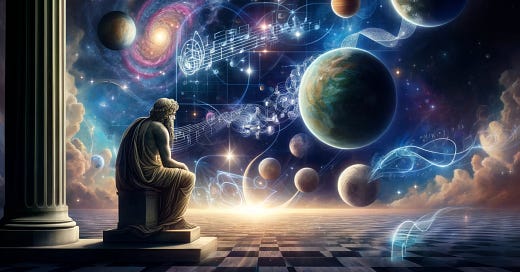Introduction.
The ancient concept of the "music of the spheres" proposes that the movements of celestial bodies create a form of music governed by mathematical principles. Walter Russell's theory of the Octaves adds a deeper layer to this idea, suggesting that the universe operates on a musical scale, with every element, light wave, and atom vibrating at specific frequencies. This article explores how these concepts integrate to provide a comprehensive understanding of the cosmos, bridging ancient wisdom with modern scientific insights.
The Harmony of the Spheres: Ancient Perspectives
The ancient Greek philosopher Pythagoras is often credited with the idea of the harmony of the spheres. He believed that the planets and stars moved according to mathematical equations, producing a celestial music that reflected the order and harmony of the universe.
Key Concepts:
Pythagorean Harmonics: Pythagoras discovered that musical intervals could be expressed as simple ratios of whole numbers, which he…
Keep reading with a 7-day free trial
Subscribe to Who, what, where am I? to keep reading this post and get 7 days of free access to the full post archives.




